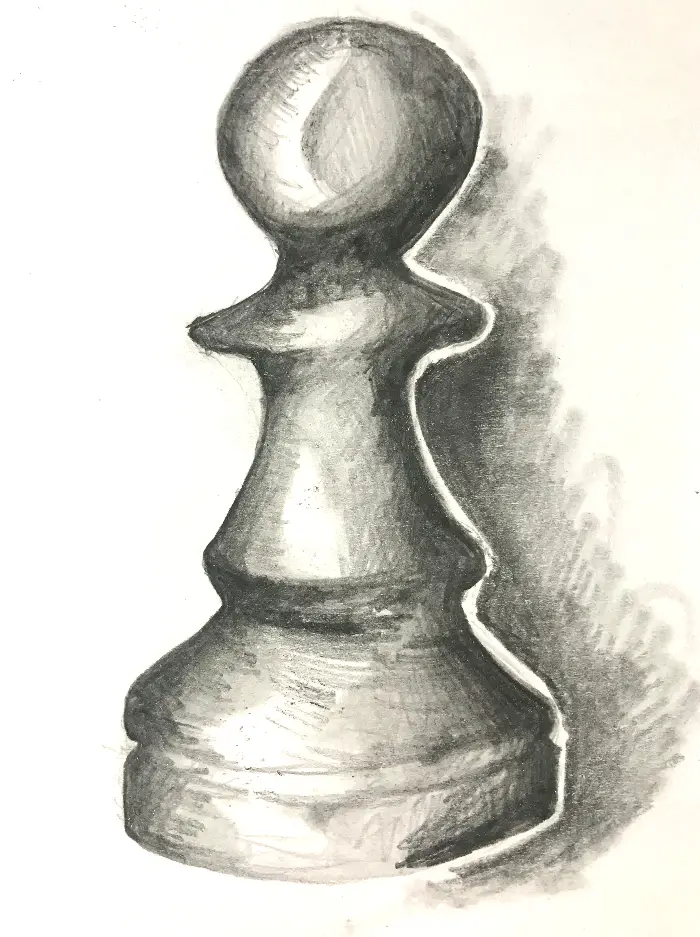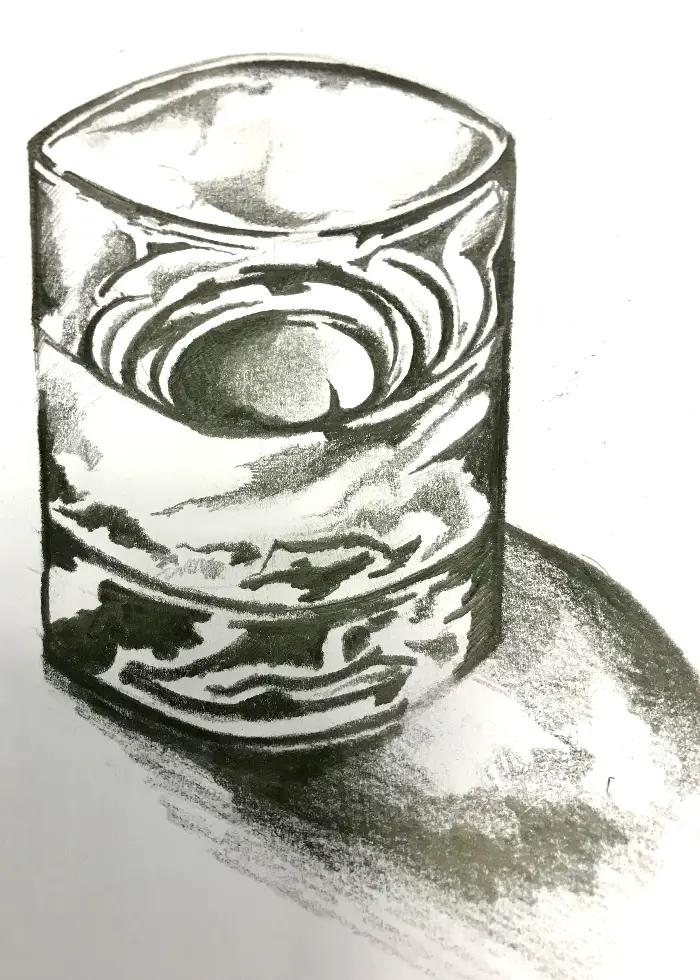What are the Qualities of a Good Drawing?
What makes a good drawing is a combination of many steps that create a picture drawn by using paper and pencil media. It's not limited to using a pen or any other drawing tools that you prefer. The specifics of what makes a sound drawing include the preparation of beginning a drawing using sketches. These are used as a visual guide to help the final composition of your art.
Basically, drawing details generates a focus and something to look at. It's more pleasing to look at an intricately crafted drawing with lots of detail. As a whole, a conventional drawing will include a variety of basics elements balanced in visual harmony.
If you're looking to create ‘good art', his post will outline a clear way to create effective well-balanced pictures combining a range of visual elements.
What Makes a Drawing a Drawing?
If you are drawing a picture using a carefully plotted series of lines on paper, this is a drawing. Lines can be thick or thin, and often a light touch is used before a final line is drawn onto the paper. Each line is laid out with purpose so the drawing becomes clear without questioning what can be seen in the picture. Only after lines are placed into the drawing, then shading, blending, and additional elements are added for realism.
Since a drawing is only one-dimensional, tricks that include light and shadow, perspective, and tone value can further enhance a drawing.
Tips for Drawing Light and Shadow
Adding the illusion of light coming from a specific direction within the picture uses tint and shadow. It allows objects or characters to appear illuminated and will give them more realistic and dimensional qualities. Light and shadow are an essential part of good skills and will give good art a polished and professional look. It takes practice to make lightness and shadow appear natural.
This takes careful planning where a light source is located and will ultimately make or break the realism factor of correct lighting values. If these are blended well and have highlights placed correctly, a viewer is tricked into believing the drawing is realistic, and thus it appears natural.
Tips for Drawing with Tone and Value
Understanding tone and value is also being able to estimate the power and strength of light and shadow. It also has a lot to do with the contrast within a representation and how this relates to distance. The range of shades that establish tones and shade values is absolutely a big part of any drawing. It takes a certain amount of practice to get the right amount of tone throughout any piece of work.
It can also create the right amount of depth seen within an illustration and enhance elements such as weather and the atmosphere. The secret to getting a great tone and shading values is blending. Without using a lot of blending, a drawing won't appear realistic.
Tips for Drawing Texture
Adding texture to a sketch is what makes the finer detail appear as it would in reality. Learning what these textures look like in real life need, so they can be replicated on paper. Yet, many textures must be practiced beforehand to be easier to express in the final drawing. Objects in the foreground are often sharper the closer they appear while they get softer and less focused in the background.
There are significant differences between objects that appear soft such as hair, clouds, or water. Then, some textures are hard and sharp with heavy textures, including rocks, landscape surfaces, and jagged-shaped objects. Whatever the texture happens to be, you need to be confident and practice drawing these surfaces to gain more experience.
Create Compositional Sketches and Thumbnails
The very first step to making any sound drawing needs to start with laying down simple sketches. The beginning ideas are used as your proof of concept before you finalize a representation. It may take several thumbnails to get the suitable composition you feel is right for putting into your drawing. Thumbnails don't need to be very large, but a sketch can be larger to begin a semi-final composition.
This is a cleaned-up sketch that has better-defined details but is still just as rough in many areas. It's used as the template for a final drawing and gives you a rough size comparison of your paper's surface space. After this is finished, a final image can then be completed.
Use Perspective to Create Interesting Viewpoints
Creating just the right angle that your picture is meant to convey is all about perspective. This is what makes a drawing have more impact through the use of visual impact. Sometimes it's not enough to have a drawing that only sees what we usually can see with our eyes. Bird's-eye views, panoramic views, and God's view are all striking reminders that we can add more emotional impact to a art.
Just like they do in epic movies, the vantage point is seemingly impossible for most people to ever see. It also helps tell a bigger story within your art by using vantage points that are bigger than life. The most stunning pictures are often portrayed at angles that are high off the ground.
Learn How to Draw
Learning to draw is an ongoing process that can last a whole lifetime to refine. Learning the basics is actually very easy and will be an essential first step of your introduction to drawing and painting. While learning each of the basic steps, it's essential to know that practice plays a big part in learning. Yet, no matter how mundane some steps may happen to be, keeping an avid interest in art should be your aspiration.
If you find drawing to be a hassle, perhaps there are other areas that you'll find fascinating. In general good art often includes the elements of perspective, detail, texture, and composition. The actual representation of planned lines heavily relies on mathematics and appropriate angles. The rest is more or less driven by a love of enjoyment and artistic expression.
What are the 5 Basic Skills of Drawing?
Edges
The basic outline you put on paper is the first step in sketching. This gives you the basic outline that starts to define your sketch.
Shapes
Some lines will include curves that relate to organic shapes and also characters. These lines will need to be refined as you go, so anytime there are curved shapes involved. These rounded lines also lend to realistic shapes. Click here to read my post. Drawing with Lines and Shapes.
Proportion and Size
You need to decide what the overall scale is going to be before you start. The size of particular objects can all change dramatically if you change the perspective. This can also affect the dynamics of your drawing that relate to gravity or movement.
Shadow and Lighting
These are added touches that make an image appear more realistic. You can make a drawing look like it's three-dimensional with the added highlight and shadows. This gives just the right amount of realism when you simulate a light source in your drawing.
.
Expressed Thoughts
You can add ideas and concepts in the form of expression into your drawing. These are helping tell a story within a picture and help others to see your message. These can be simple when you start and get more developed as you gain sketching experience.
Drawing Edges
Your edges are the most critical part of outlining anything that's in your representation. These edges can be thin or thick, depending on where your highlight and shadow side is located. On sections where the light is hitting a character or object, these edges will be much lighter.
Drawing Spaces
This can relate to perspective and how objects fit into that space. It needs to be appropriate to where these objects are close to or far away from the viewer. This includes defining objects that are up close and ones that are at the horizon line. If you stick to the rules of perspective line drawings, everything will be scale.
Drawing Shadows
The light source is located in your representation. You will need to add the appropriate shadows where shadows would generally fall. This will depend on the angle and where the light is falling onto objects and characters. It can also affect surfaces and textures, so the contrast you add is also an important addition.
Drawing Relationships
This is related to the expressed thought where you add a message or continued story to your artwork. These are subtle hints that are added on purpose to tell viewers another part of the story or a story that might continue further. Whatever you add to your story within an image needs to be planned out to be told with images rather than words.
Gestalt
This is a German expression used in art to define how we perceive things about what is being shown. This can include what we perceive as art as actually two pictures in one. It's also a matter of perspective since we choose to see what we want. Some might see opportunity while others see despair, so it's all a matter of choice. Some Gestalt pictures make you question what you are looking at and how space is questioned.
Final Thoughts
If you've wanted to know what are the qualities of a successful drawing, at least you have some great pointers now. If this hasn't given you a better direction, you'll feel that making a good drawing is possible. Now all you need is to start practicing as often as possible to start making great pictures right away.
Create Art With My Favourite Drawing Resources
General Drawing Courses. I like Udemy if you want to develop your knowledge of drawing techniques. Udemy is an excellent choice due to its wide range of creative courses and excellent refund policy. They often have monthly discounts for new customers, which you can check here. Use my link.
Sketching and Collage. Take a look at this sketching resource I have created. Use this link.
Proko. Is one of my favorite teachers who surpasses in the teaching of Anatomy and Figure drawing. Prokos course breaks down the drawing of the human body into easy-to-follow components aiding the beginner to make rapid progress. For this, I really like Proko.
Art Easels. One of my favorite ways to draw is by using a drawing easel, which develops the skill of drawing on a vertical surface. The H frame easel is an excellent vertical way to add variety to the style and type of marks you create when using a drawing board.
To see all of my most up-to-date recommendations, check out this resource I made for you.













